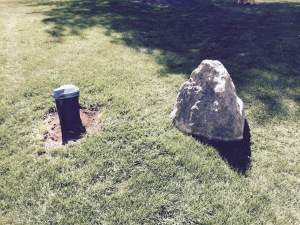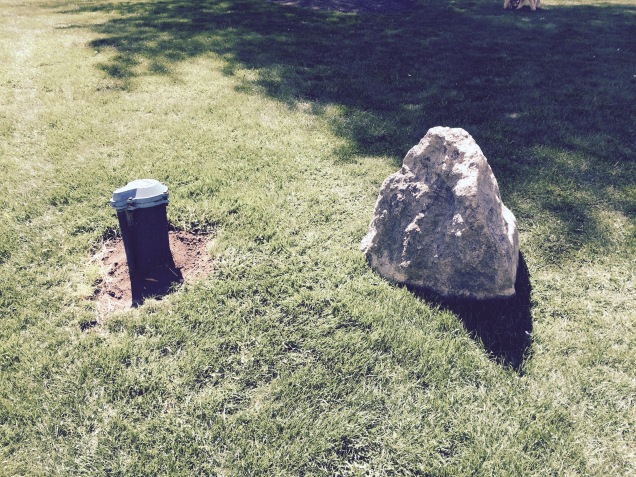If you have a private well on your property, you know how frustrating it can be to deal with the wellhead (even though the delicious well water you get as a result is worth it!). This less-than-appealing metal pipe sticking up from the ground is especially annoying when it comes to landscaping. However, it is crucial that you use proper care when working around the wellhead; otherwise you risk contamination of your well water or damage to the head itself. To help you out, we have gathered seven of the most important do’s and don’ts when it comes to maintaining the ground around your private well.
DO make sure at least 12 inches of the wellhead are visible above ground.
This is for two reasons: First, you need to be able to quickly and easily locate your wellhead in the event of an emergency—or even for basic routine maintenance. If the wellhead is buried, you will have to spend extra time finding it when you need it. Second, if your wellhead is underground, it is more likely to get contaminated with bacteria, which you clearly don’t want.
DO give the ground around your private well a downward slope.
A gradual decrease in elevation around your wellhead is a must for proper drainage. You should also make sure that the decline is steep and long enough that there is nowhere for the water to pool up over your private well.
DO use extra caution when working around the wellhead.
Heavy equipment can do some serious damage to your wellhead, so you need to be extra careful when performing any work around it.
 DO NOT use any well coverings.
DO NOT use any well coverings.
Even though the sight of your wellhead may not be your favorite thing, you should not cover it up with any fake rocks, gravel, treated wood, or wishing wells. These items not only result in contamination to your well water, but they also make it challenging to access the wellhead when it’s time for maintenance or repairs.
DO NOT plant anything within four feet of the wellhead.
Roots are a private well’s worst enemy because they can destroy the well’s casing. Never plant within four feet, and even beyond that distance, make sure that you are only choosing plants with short roots. The larger the plant, the larger the roots, which means trees should be at least 20 feet away, with the water-needy varieties (willows, poplars, maples, and elms) at least 50 feet away.
DO NOT allow any pesticides or fertilizers within 100 feet of the private well.
You don’t want them in your well water, do you? Enough said.
DO NOT forget to check the local restrictions and requirements for private wells in your area.
Every city has different codes, and you want to make sure you follow yours or you risk some serious fines.
If you need any help locating your wellhead or performing routine maintenance on your private well, contact Greco & Haines. We would love to help you with all of your well water needs.


